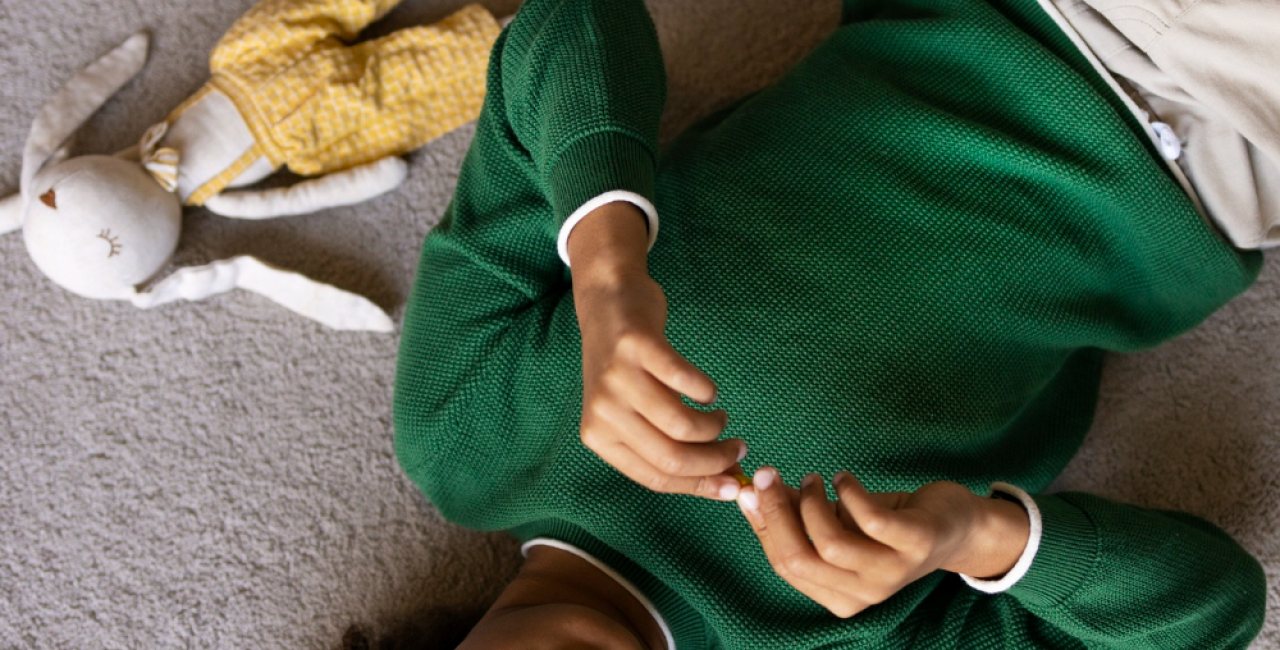Every parent has seen it before, your child picks up a habit that makes you pause. Maybe it is biting their nails, sucking their thumb, opening their mouth, or spending too much time glued to a screen. At first, it might seem small or even harmless, but over time, it can leave you wondering: “How do I help my child stop this without making things worse?”
Children naturally pick up habits as they grow. Some are good, like brushing their teeth before bed, while others stick around in ways that feel less helpful. These habits often form as a way to find comfort, imitate others, or cope with boredom and stress. The good news is that habits are not set in stone. With the right guidance, children can unlearn unhelpful patterns and replace them with healthier ones.
In this post, we will look at why children develop habits, what your role is as a parent, and practical steps you can take to help your child replace old behaviors with healthier ones.
Understanding Bad Habits in Children
Before you can help your child change a habit, it helps to understand why it is there in the first place. Children rarely develop habits “just because.” In most cases, a habit is serving a need, even if it seems unhelpful or frustrating to you as a parent.
Here are some of the most common reasons children develop bad habits:
1. Comfort and Self-Soothing
Many habits are a way for children to calm themselves when they are tired, nervous, or overwhelmed. For example, thumb-sucking, hair-twirling, or nail-biting often start as coping tools to reduce stress.
2. Attention-Seeking
Sometimes a child repeats a habit because it gets a reaction, positive or negative, from parents or others.
3. Boredom or Lack of Engagement
Habits can fill gaps when children don’t know what else to do. For instance, excessive screen use, fidgeting, or chewing on pencils or pen covers may appear when a child isn’t challenged or occupied.
4. Copying and Imitation
Children are great imitators. They often pick up behaviors they see in siblings, friends, or even adults.
5. Routine and Repetition
If a behavior isn’t addressed early, it can quickly become a habit simply because it is repeated often.
6. Stress or Anxiety
Some habits are linked to deeper emotions. If a child is struggling with school pressure, bullying, or big life changes, habits may develop as a release. For example, nail-biting or overeating can sometimes be tied to stress they don’t yet know how to express in words.
It is important to see habits as signals, not just problems.
When you start looking at the why behind the behavior, you move from frustration to understanding. And that shift is what makes it possible to guide your child toward healthier ways of coping and behaving.
Practical Strategies to Break Bad Habits
Breaking habits takes more than simply telling a child to stop. Children usually need support, alternatives, and clear guidance they can actually follow. Here are some practical ways to help:
1. Replace, Don’t Just Remove
Habits stick because they meet a need, such as comfort, boredom, stress release, or attention. If you want the habit to fade, you need to offer a healthier substitute. For example, if your child bites their nails, you could provide a stress ball or something to keep their hands busy. If they have a habit of whining for attention, teach them more effective ways to express themselves, like saying “Can I have some help, please?” or “Can we play together?” By offering an alternative, you redirect the behavior instead of leaving a gap that the old habit will quickly fill.
2. Set Clear Expectations
Children respond better when they know exactly what is expected of them. Instead of vague corrections like “Stop doing that,” explain why the habit is unhelpful and what they should do differently. For instance, if your child leaves toys scattered across the floor, you might say, “When toys are left out, someone could trip and get hurt. After playing, let us put them back on the shelf.” This gives your child both a reason and a clear next step. Over time, repeating this helps them understand the habit isn’t just “bad” but genuinely unhelpful to the family or themselves.
3. Use Consistent Gentle Reminders
Breaking habits takes time, and children often slip back into old behaviors without realizing it. Instead of scolding, offer calm, consistent reminders. For example, if your child forgets and starts nail-biting again, gently hand them their stress ball. The key is consistency. A habit is built on repetition, and it is only through repeated, calm guidance that a new, healthier habit can take root. Children are more likely to change when they feel supported rather than criticized.
4. Positive Reinforcement Works Wonders
Children thrive on encouragement. When you catch your child doing the right thing, make it a big deal. Acknowledge their effort with genuine praise: “I noticed you asked politely instead of whining; that was great!” You can also use simple reward systems, like sticker charts or extra playtime, to reinforce progress. The important thing is not to focus only on mistakes but to celebrate the little wins that show your child is trying. Positive reinforcement helps children feel proud of their progress, which motivates them to keep going.
5. Break the Habit into Small Steps
Some habits can feel overwhelming to break all at once. It helps to tackle them in manageable steps. For example, if your child spends three hours on a screen daily, it may be too much to suddenly cut it down to one. Instead, start by reducing it to two and celebrate that success. Once your child is used to the new limit, gradually move closer to your goal. Small, steady changes build confidence and make the process less frustrating for both you and your child.
When to Step In More Firmly
While most habits fade with time, some become harmful or disruptive enough that parents need to take stronger action. Here are situations where stepping in more firmly becomes important:
1. When Health Is at Risk
If a habit starts to affect your child’s physical health, it should not be brushed off as a phase. Thumb-sucking, for example, can cause dental problems if it continues beyond a certain age. Nail-biting that leads to bleeding, or overeating that affects weight and health, are other red flags.
In these cases, it is not just about breaking a habit, it is about protecting your child’s well-being. This might mean setting firmer boundaries, introducing professional guidance, or creating structured routines that discourage the behavior.
2. When the Habit Affects Daily Functioning
A habit becomes concerning when it disrupts your child’s everyday life. If your child spends so much time on screens that they fall behind on homework or can’t get enough sleep, it is no longer just a minor issue. Similarly, if procrastination leads to repeated missed assignments, the habit is interfering with responsibilities and growth. At this point, you may need to introduce firmer rules, like clear screen-time limits with consequences for breaking them, or structured homework times that ensure schoolwork gets done before play.
3. When Nothing Changes Despite Consistent Guidance
Sometimes, even after weeks or months of trying alternatives, reminders, and positive reinforcement, a habit still doesn’t improve. This is usually a sign that your child needs stronger boundaries or more structured support. It might mean setting clear rules with consistent consequences, like reducing privileges when the habit persists. It may also mean seeking outside help, especially if the habit is interfering with your child’s growth or confidence. The important thing here is not to give up or blame your child, but to recognize that some habits require more than gentle nudges to overcome.
Stepping in firmly doesn’t mean shaming or punishing your child. It means being clear, consistent, and intentional. Involve other supportive adults, teachers, relatives, or professionals, when necessary. Most importantly, reassure your child that the goal isn’t to punish them, but to help them grow in healthier ways. That balance of firmness and care helps children take the process seriously without feeling unloved or unsupported.
Your Role as a Parent
When it comes to breaking habits, how you respond as a parent makes all the difference. It can be tempting to scold, nag, or even shame your child into stopping, but that approach often backfires. Instead of letting go of the habit, children may cling to it more tightly, especially if it is something they use to cope with stress or emotions.
Your role isn’t to punish but to guide. This means helping your child notice the habit, understand why it is unhelpful, and practice healthier ways to cope. Calmly pointing it out is a good place to start.
And don’t underestimate the power of patience. Children often need time, gentle reminders, and consistent support to change a habit. By guiding instead of shaming, you create a safe environment where your child feels understood, valued, and capable of change.


